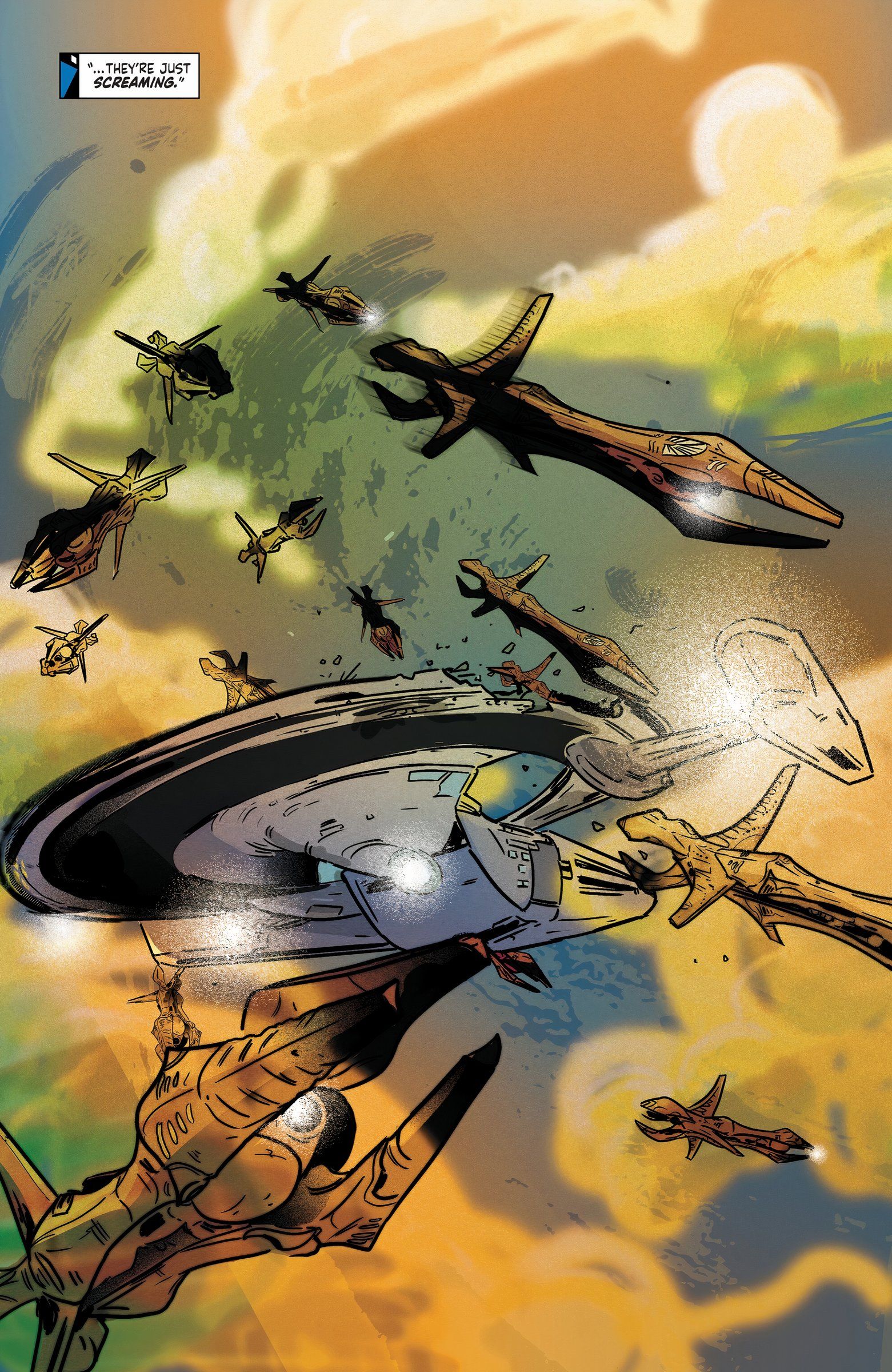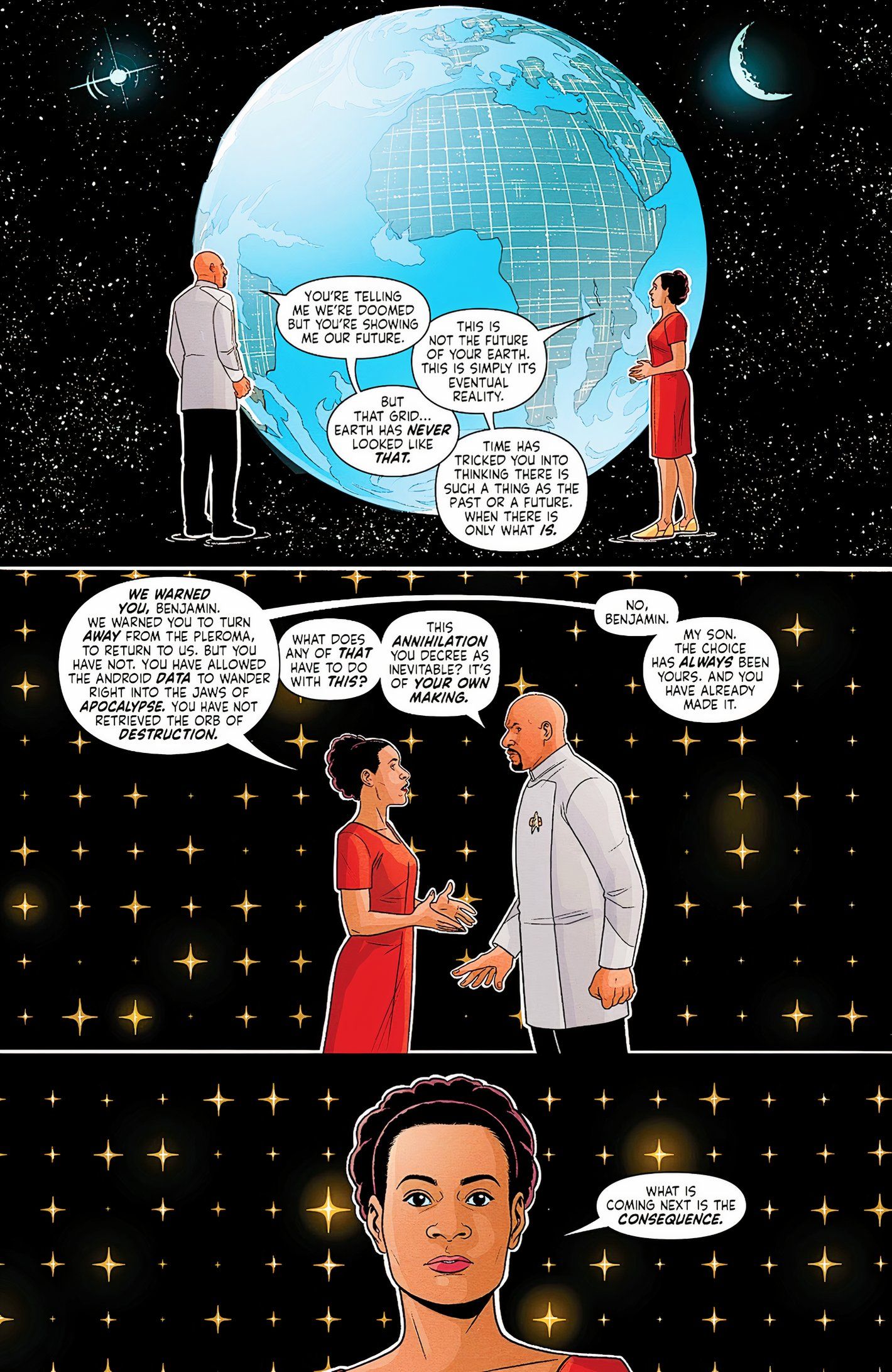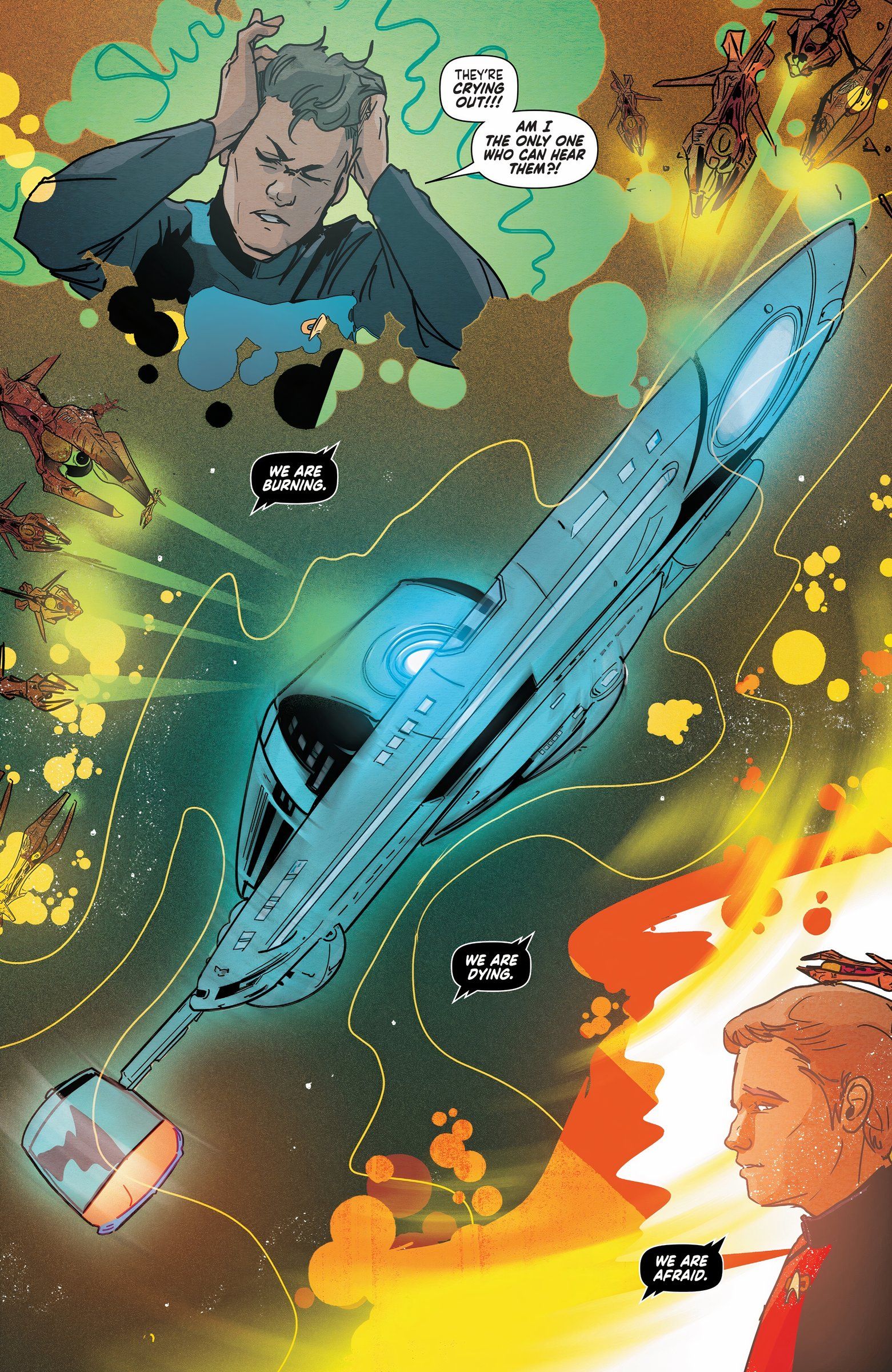Warning: contains spoilers for Star Trek #25!
Fluidic Space remains a mystery in the Star Trek universe, but a new theory about this realm has the potential to change the franchise’s entire endgame. The home of Species 8472, Fluidic Space, has made only a handful of appearances on-screen. Now the Theseus find themselves there in Star Trek #25, and the issue’s back matter advances a theory about Fluidic Space that could change everything fans know.
Star Trek #25, the first part of “When the Walls Fell,” is written by Jackson Lanzing and Collin Kelly and drawn by Liana Kangas. Throughout the issue, Ben Sisko and the Theseus crew work frantically to leave Fluidic Space before they attract the attention of Species 8472. The issue includes several text pieces throughout, including an extra long one at the book’s conclusion, made to resemble a Starfleet briefing on Fluidic Space. It details some of the species that call it home, as well as a unique theory about its origin: that it is the future of our universe.
Fluidic Space’s Star Trek Connection, Explained
Species 8472 Makes Fluidic Space Dangerous
Species 8472’s first appearance was in the episode “Scorpion, Part One.”
Fluidic Space, and Species 8472, are one of Star Trek: Voyager’s biggest contributions to the franchise. At the end of Voyager’s third season, the writers decided to introduce the Borg into the mix. Just a few months prior, the Borg helped elevate Star Trek: First Contact to blockbuster status, and Paramount felt it a good idea to bring them back to television as well. With Voyager already in the Borg’s native Delta Quadrant, it felt natural and organic. However, Voyager’s writers decided to shake the Borg’s introduction up a bit by creating an even more powerful race: Species 8472.

Related
Star Trek’s Picard, Janeway and T’Pol Officially Unite as… Villains?!
In a first look at Star Trek: Lower Decks #2, from IDW, several of Starfleet’s biggest icons come together…but with a shocking twist!
The newly created Species 8472 were unlike any other alien race seen in Star Trek. They did not hail from another planet: they were from another dimension, one where everything was alive. How Fluidic Space came to be never was revealed in its few Voyager appearances, nor was how Species 8472’s unique biology evolved. Species 8472’s DNA was so dense, and so different, that the Borg could not assimilate them–a first in the Star Trek universe. And as seen in the text piece at the end of Star Trek #25, Species 8472 was just the tip of the iceberg.
The Origin of Fluidic Space Remains as Mysterious as the Realm Itself
The Star Trek Universe’s Distant Future Remains Unexplored
Star Trek #25’s text piece draws heavily on revelations about Fluidic Space made in various novels as well as the Star Trek Online video game. While Fluidic Space’s on-screen appearances have been few and far between, it has proven irresistible to writers of non-canon sources, who have developed it further by introducing other species that call it home. These new races appear far more benevolent, but no less alien, than Species 8472. The issue also acknowledges that much is still not known about Species 8472, largely because it is too dangerous to travel there.
Star Trek
#25’s theory about the origin of Fluidic Space is mind-blowing, and carries enormous implications for the franchise’s far distant future.
Star Trek #25’s theory about the origin of Fluidic Space is mind-blowing, and carries enormous implications for the franchise’s far distant future. IDW’s Star Trek has flirted around with this before: in one issue, the Bajoran Prophets showed Sisko a vision of a future Earth, one divided into grids. While there is likely no correlation between the two, it shows a fascination with where humanity is going, even millions of years into the future. Fluidic Space, however, is scary and intense, and is a far cry from what Sisko saw a few issues ago.
The Theory of Fluidic Space’s Origin Will Be Hard to Prove, If It Is Even True
What Role Will Fluidic Space Play in The Lore War?
This theory about the Star Trek universe’s future may prove hard to test, and with its seeming destruction at Lore’s hands in Star Trek #500, even less likely to be true. If Fluidic Space was indeed our universe’s future, it would have disappeared when Lore detonated the Orb of Destruction. Instead, its inhabitants were dying, making them as much a victim of Lore’s evil as Sisko. Fluidic Space, while unlikely to be our future, may still play a role in the future, particularly during The Lore War.
Star Trek #25 is on sale now from IDW Publishing!


